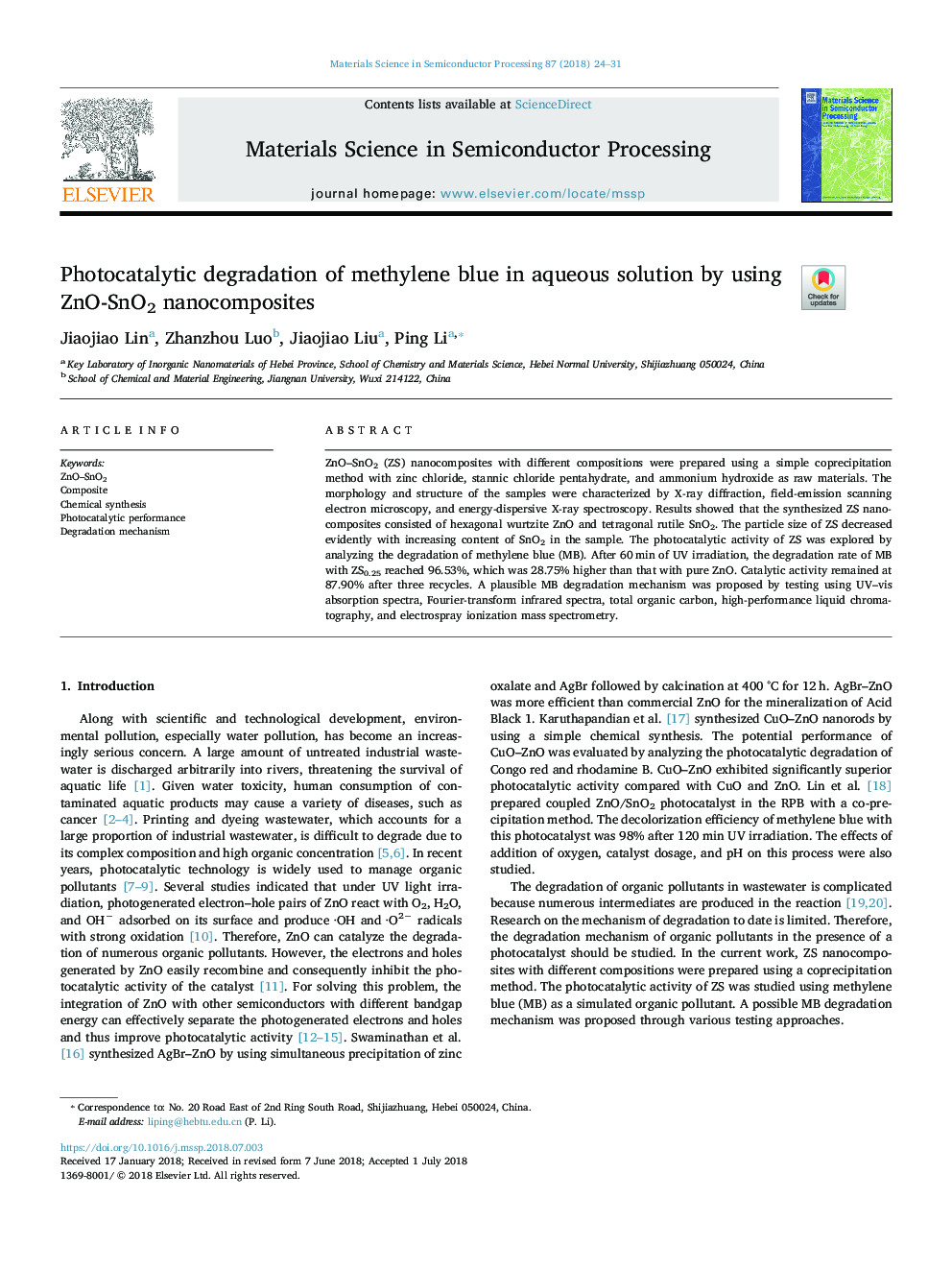| Article ID | Journal | Published Year | Pages | File Type |
|---|---|---|---|---|
| 7117374 | Materials Science in Semiconductor Processing | 2018 | 8 Pages |
Abstract
ZnO-SnO2 (ZS) nanocomposites with different compositions were prepared using a simple coprecipitation method with zinc chloride, stannic chloride pentahydrate, and ammonium hydroxide as raw materials. The morphology and structure of the samples were characterized by X-ray diffraction, field-emission scanning electron microscopy, and energy-dispersive X-ray spectroscopy. Results showed that the synthesized ZS nanocomposites consisted of hexagonal wurtzite ZnO and tetragonal rutile SnO2. The particle size of ZS decreased evidently with increasing content of SnO2 in the sample. The photocatalytic activity of ZS was explored by analyzing the degradation of methylene blue (MB). After 60â¯min of UV irradiation, the degradation rate of MB with ZS0.25 reached 96.53%, which was 28.75% higher than that with pure ZnO. Catalytic activity remained at 87.90% after three recycles. A plausible MB degradation mechanism was proposed by testing using UV-vis absorption spectra, Fourier-transform infrared spectra, total organic carbon, high-performance liquid chromatography, and electrospray ionization mass spectrometry.
Related Topics
Physical Sciences and Engineering
Engineering
Electrical and Electronic Engineering
Authors
Jiaojiao Lin, Zhanzhou Luo, Jiaojiao Liu, Ping Li,
